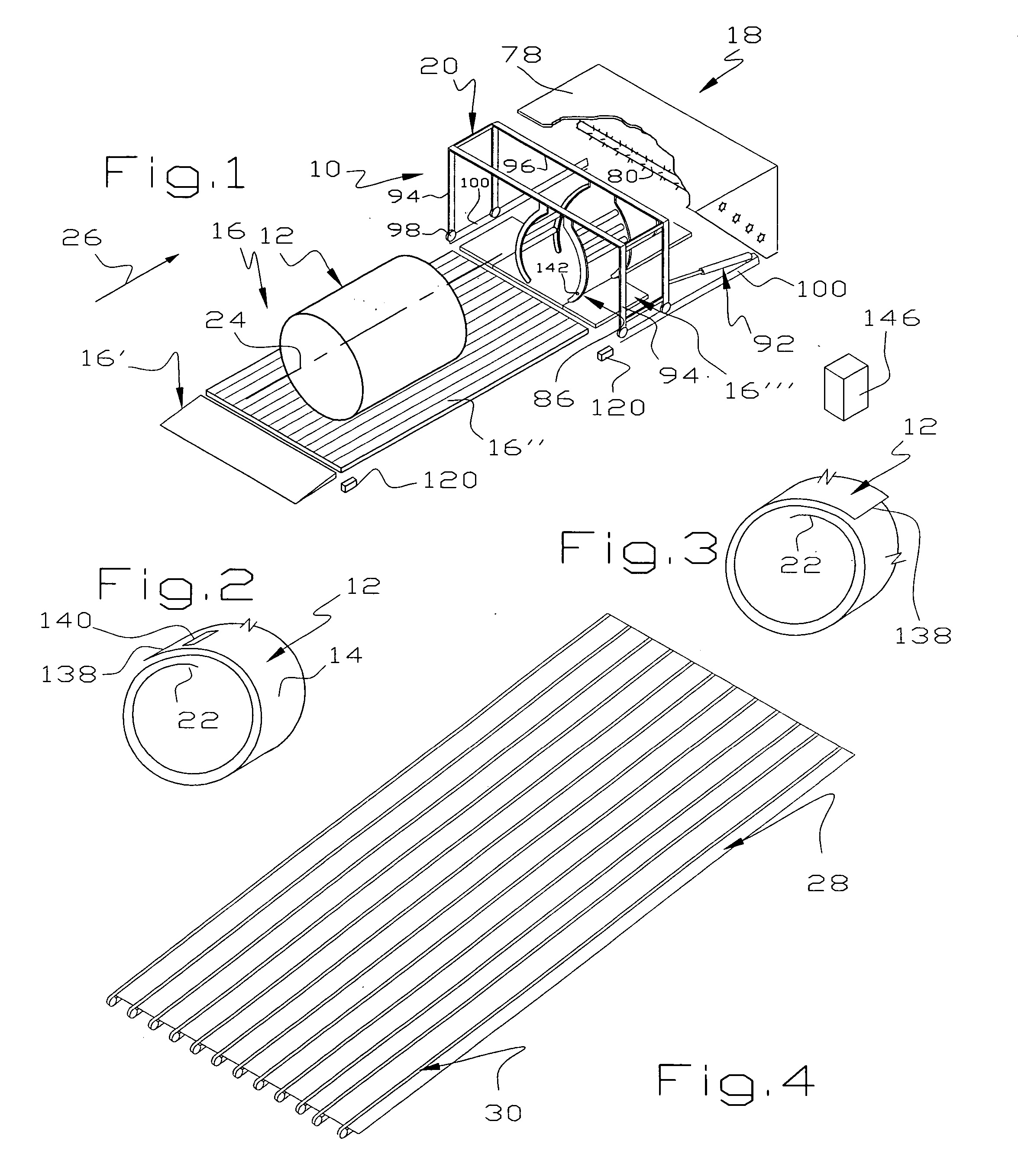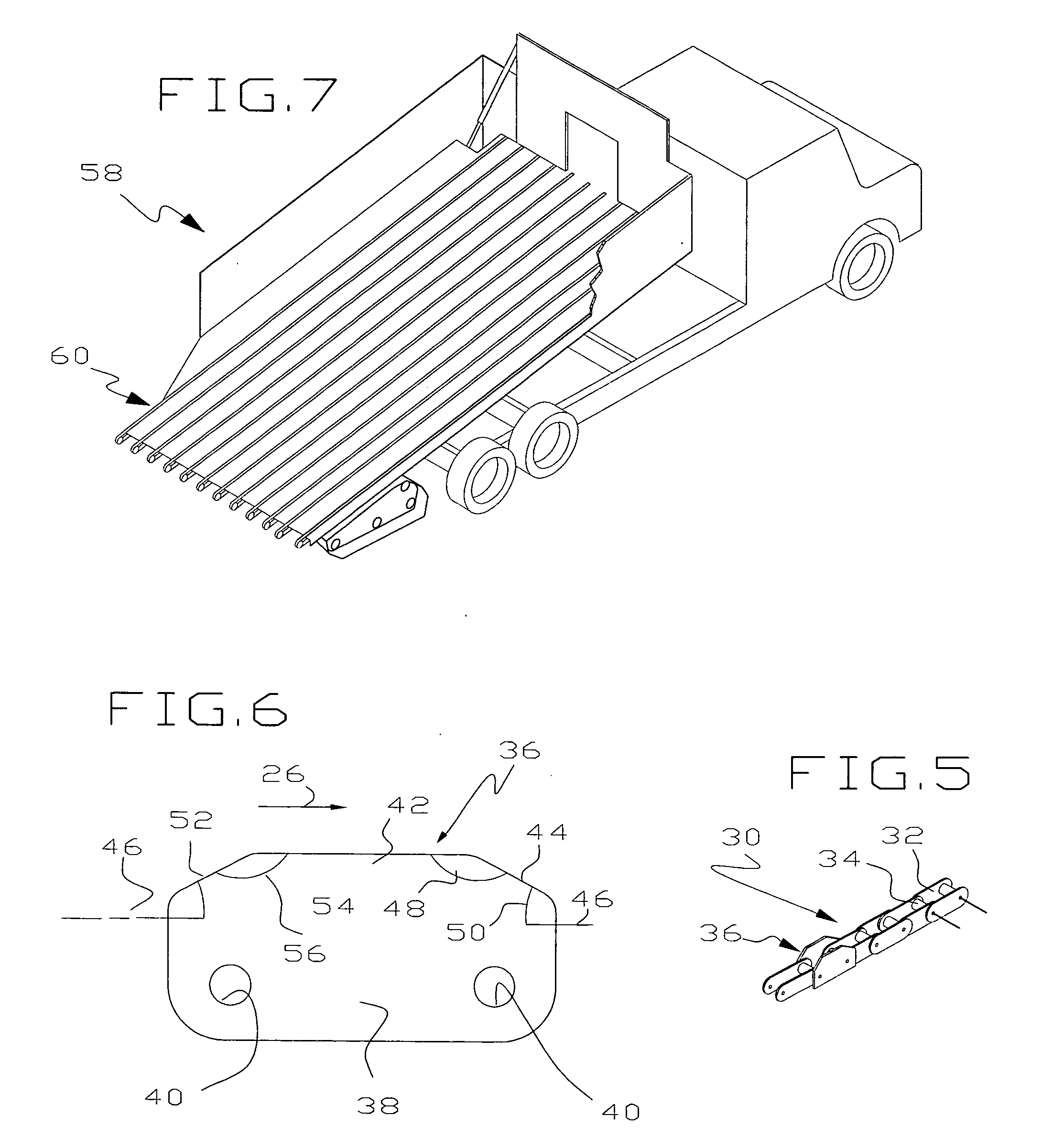Technique for removing a cover from cylindrical modules
a technology for cylindrical cotton modules and covers, applied in the field of handling cylindrical cotton modules, can solve the problems of very different unwrapping of such modules
- Summary
- Abstract
- Description
- Claims
- Application Information
AI Technical Summary
Benefits of technology
Problems solved by technology
Method used
Image
Examples
Embodiment Construction
[0057] Referring to FIG. 1, there is illustrated a module feeder 10 of a type that is capable of handling cylindrical seed cotton modules 12 that are wrapped with a cover or wrapping 14 that is sufficient to shed water. The current cover proposed for use in wrapping seed cotton modules is an organic polymer, or plastic, but it will be understood that this invention is usable with any suitable material that is effective to shed water and it is desired to keep the wrapping material out of the ginned cotton. The current version of the plastic cover is wrapped a plurality of times around the seed cotton and relies on stretch film technology and an adhesive to secure adjacent wraps of the plastic to each other. It will be understood that other suitable techniques for adhering the cover to itself will be apparent to those skilled in the art, such as high or low temperature shrink wrapping techniques, heat sealing techniques, twine, or combinations thereof, and the like. As used herein, th...
PUM
| Property | Measurement | Unit |
|---|---|---|
| Length | aaaaa | aaaaa |
| Angle | aaaaa | aaaaa |
| Flow rate | aaaaa | aaaaa |
Abstract
Description
Claims
Application Information
 Login to View More
Login to View More - R&D
- Intellectual Property
- Life Sciences
- Materials
- Tech Scout
- Unparalleled Data Quality
- Higher Quality Content
- 60% Fewer Hallucinations
Browse by: Latest US Patents, China's latest patents, Technical Efficacy Thesaurus, Application Domain, Technology Topic, Popular Technical Reports.
© 2025 PatSnap. All rights reserved.Legal|Privacy policy|Modern Slavery Act Transparency Statement|Sitemap|About US| Contact US: help@patsnap.com



